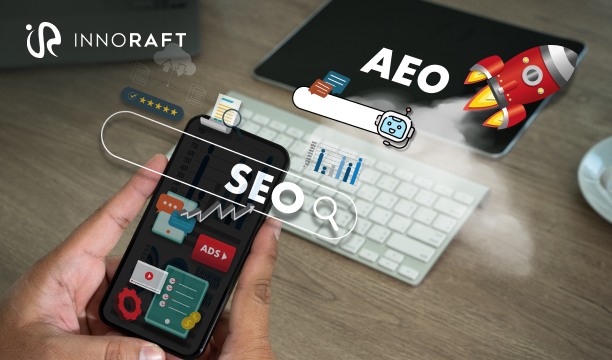The digital landscape is rapidly evolving beyond traditional search. For years, Search Engine Optimization (SEO) was the single focus, but the rise of voice assistants and generative AI has introduced two critical new strategies: Answer Engine Optimization (AEO) and Generative Engine Optimization (GEO).
Modern search is no longer just a list of links; customers are now seeking instant, direct answers from platforms like ChatGPT, Google's AI Overviews (SGE), and voice assistants. This fundamental shift demands that businesses look beyond keywords and optimize their content to be found, cited, and used across this wider range of AI-driven platforms. Understanding the core difference between SEO, AEO, and GEO is essential for any modern marketer.
Which Do You Need: SEO, GEO, or AEO?
For most businesses, SEO vs AEO vs GEO are not isolated strategies but rather interconnected components of a unified approach. While all three are generally necessary, their priority may vary depending on the specific business.
SEO remains foundational. A strong website that ranks well on Google is essential for establishing authority and trust.
GEO is increasingly vital for industries where customers use AI platforms for research and decision-making. The concept of Generative Engine Optimization explained is that your content becomes the source material for AI tools. For instance, a B2B software buyer might ask ChatGPT for "the best project management tools" instead of performing a traditional Google search. How GEO changes search rankings is by shifting the focus from link clicks to content citation.
AEO is crucial for businesses that rely on local visibility, quick answers, or voice search. For example, a healthcare provider would significantly benefit from AEO strategy for marketers using tactics to appear when someone asks, "Where is the closest urgent care?".
The fundamental difference in visibility is clearly illustrated by the AEO vs GEO and SEO vs AEO comparison points.
Key Differences Between SEO, AEO, and GEO
The following table summarizes the core differences in goal, target audience, and optimization signals across Search Engine Optimization vs Answer Engine Optimization and Generative Engine Optimization. This provides a clear SEO vs AEO vs GEO comparison.
AEO optimizes content for AI search by providing concise answers (40-60 words), using schema (FAQPage, HowTo), and refining phrasing for featured snippets, People Also Ask, and voice assistants. Combining this with strong SEO fundamentals (fast pages, meta tags, link profile) and GEO (Generative Engine Optimization) for chatbot citations ensures comprehensive Generative AI in search optimization and discovery.
Implementing this strategy is simple:
- Identify Questions: Use tools like Google Search Console and SEMrush to find common user questions.
- Craft Concise Answers: Create brief, direct answers within H2/H3 blocks.
- Validate JSON-LD: Ensure your structured data is correctly implemented.
- Measure Performance: Track snippet counts, zero-click impressions, and AI citation rates.
- Iterate and Refine: Treat each update as an experiment, testing over two to four weeks. Document results, adjust your approach, and refresh answers every few months.
This iterative process of small improvements leads to both immediate visibility and long-term topical authority.
Adapting Your Strategy: Immediate Steps
To effectively adapt your strategy in the evolving digital landscape, focus on these key areas:
- Strengthen SEO Fundamentals: Continue to develop high-quality content, optimize your technical website structure, and secure backlinks from reputable sources.
- Integrate GEO Tactics: Utilize schema markup, optimize for entities, and leverage digital PR to enhance your brand's presence across the web.
- Implement AEO Practices: Incorporate FAQ sections on your website, use structured data, and ensure your content directly addresses common user questions.
- Embrace Flexibility: Search behavior is constantly changing, particularly with the maturation of AI tools. Review the AEO performance and be prepared to adjust your strategy as needed.
AEO is the natural progression of SEO services, designed to help users locate information more quickly. By integrating answer engine optimization with established strategies and GEO, you can prepare your content for the age of AI. This approach ensures a strong Future of SEO and AEO, leading to increased zero-click reach, improved voice-search performance, and more robust generative-AI citations.
How Agencies Can Assist with Implementation?
Agencies specializing in SEO, GEO, and AEO possess the expertise to provide comprehensive optimization. Partnering with reputable agencies like Innoraft offers businesses several advantages:
- Structured Data and Schema Deployment: Implementing structured data and schema to enhance AI readability.
- Multi-Format Content Creation: Developing SEO, GEO, and AEO-compliant content in various formats, including FAQs, product pages, and blogs.
- AEO Consulting: Offering answer engine optimization consulting to prepare brands for AI-first search environments.
- Ongoing Monitoring and Optimization: Continuously monitoring and optimizing strategies to adapt to evolving algorithms.
This integrated approach ensures brands remain at the forefront, regardless of how customers are searching.
At Innoraft, Answer Engine Optimization (AEO) services are designed to position your brand as a leader. It transform your content into the definitive answer, helping you maintain relevance, differentiate yourself, and succeed in AI search.
Conclusion
To remain visible, top-of-mind, and at the forefront in the competitive landscape, businesses must embrace Generative Engine Optimization (GEO) and Answer Engine Optimization (AEO).
By strategically combining all three—SEO for search engine result pages, GEO for AI-generated abstracts, and AEO for structured question-and-answer formats—brands can ensure their presence wherever customers are searching. The holistic approach addresses the full difference between SEO, AEO, and GEO.
To succeed in this evolving era, it's crucial to stay current with algorithms and shifting consumer trends. Partner with an expert to implement the right platforms and strategies for brand growth.
FAQ
Frequently Asked Questions
To succeed with GEO, your content must demonstrate high E-E-A-T (Experience, Expertise, Authoritativeness, Trustworthiness). AI models prioritize content that is:
- Contextually Deep: Thoroughly covers a topic.
- Structured Clearly: Uses proper headings, lists, and schema markup.
- Factual and Credible: Provides verifiable data and strong sources.
Didn’t find what you were looking for here?


